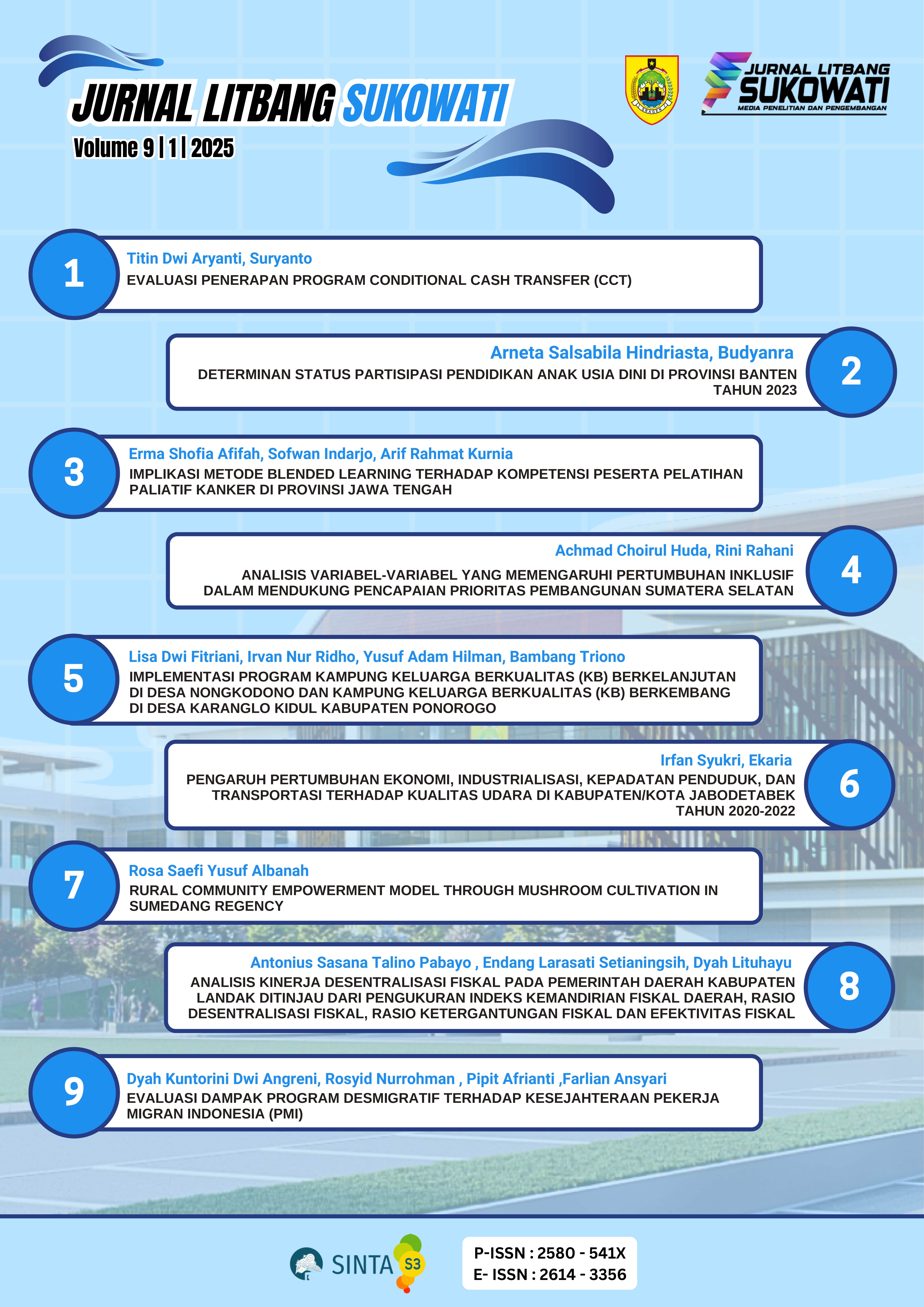The Influence of Economic Growth, Industrialization, Population Density, and Transportation on Air Quality in Jabodetabek Regencies/Cities in 2020-2022
DOI:
https://doi.org/10.32630/sukowati.v9i1.510Keywords:
air quality, economic growth, industrialization, population density, transportation, Random Effect ModelAbstract
Unhealthy air quality is an annual problem that has yet to be resolved in many countries, including Indonesia. The government has made many efforts, especially the Ministry of Environment and Forestry (KLHK), to overcome the low air quality as part of its annual report agenda. However, air quality in DKI Jakarta, Banten, and West Java, especially the Jabodetabek regencies/cities, still needs improvement. That aligns with the conditions in Jabodetabek, which is densely populated and has transportation, high economic activity, and the concentration of industry that has begun to shift from the core area to the buffer zone. Therefore, this study will review the effect of economic growth, industrial agglomeration, population density, and transportation on air quality in Jabodetabek with the Random Effect Model (REM). The results show that increasing industrial agglomeration and population density significantly affect the decreasing of air quality in the Jabodetabek regencies/cities.
Downloads
Published
How to Cite
Issue
Section
License
Copyright (c) 2025 Irfan Syukri, Ekaria Soebijarto

This work is licensed under a Creative Commons Attribution 4.0 International License.


















